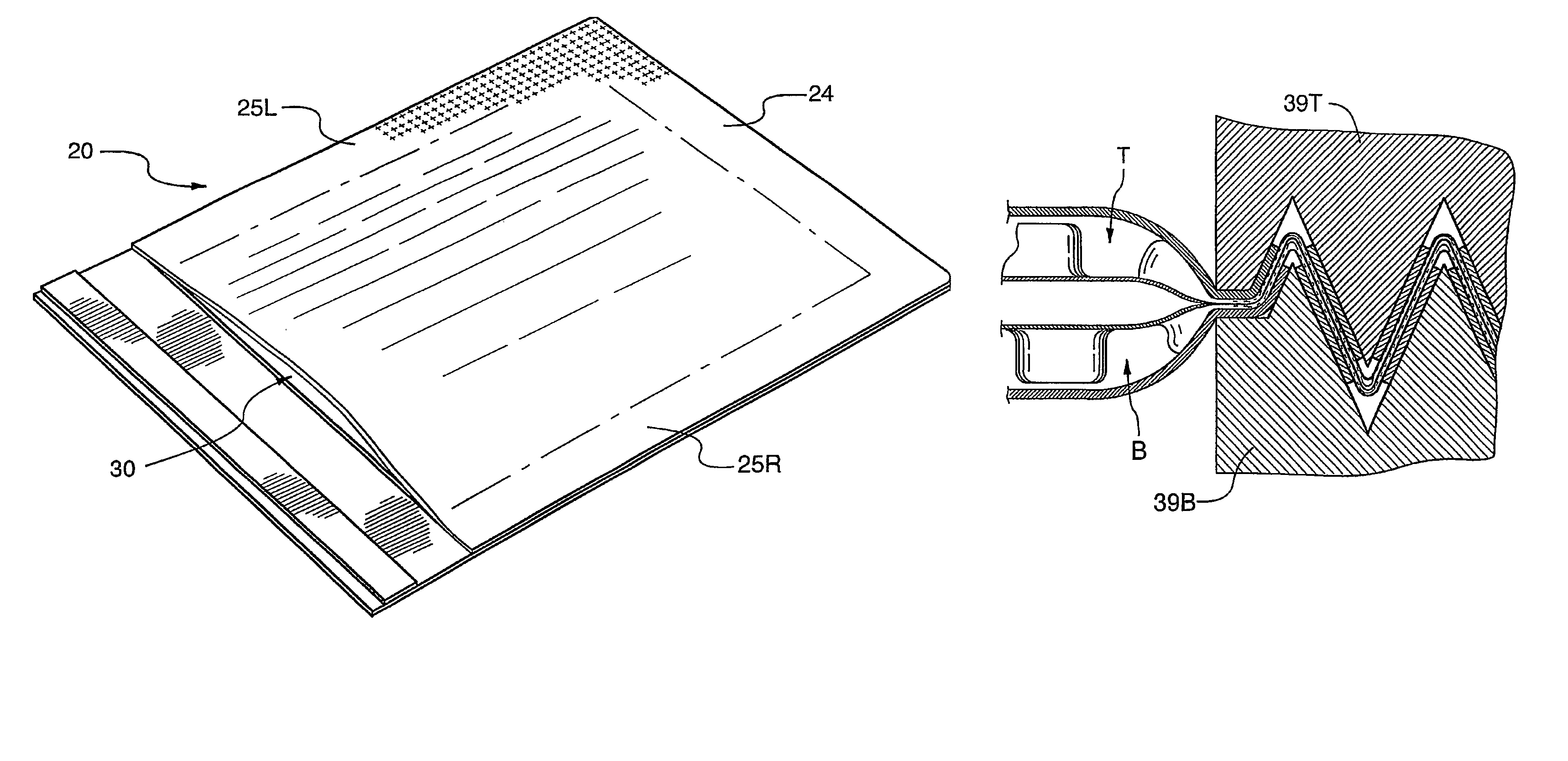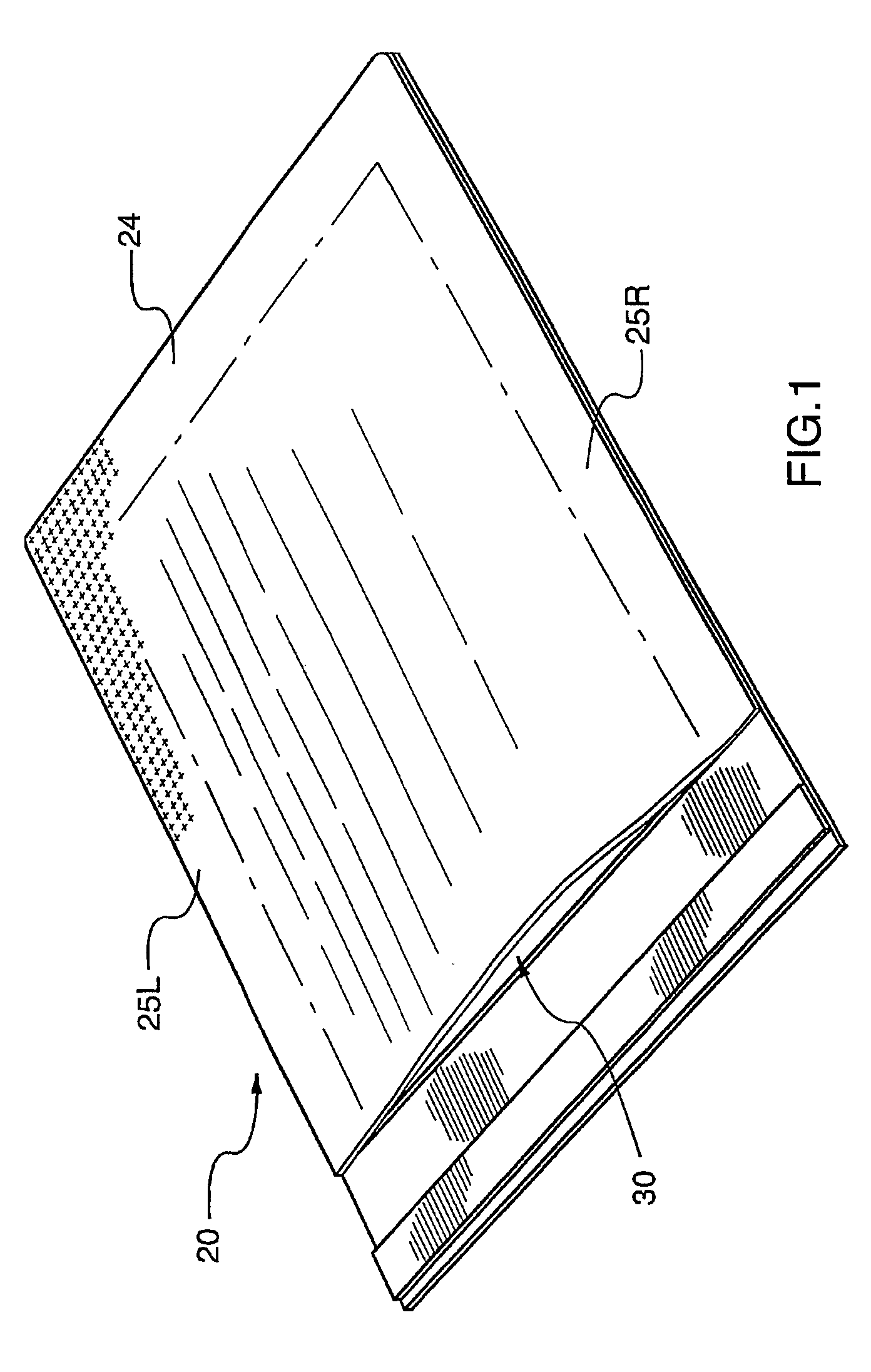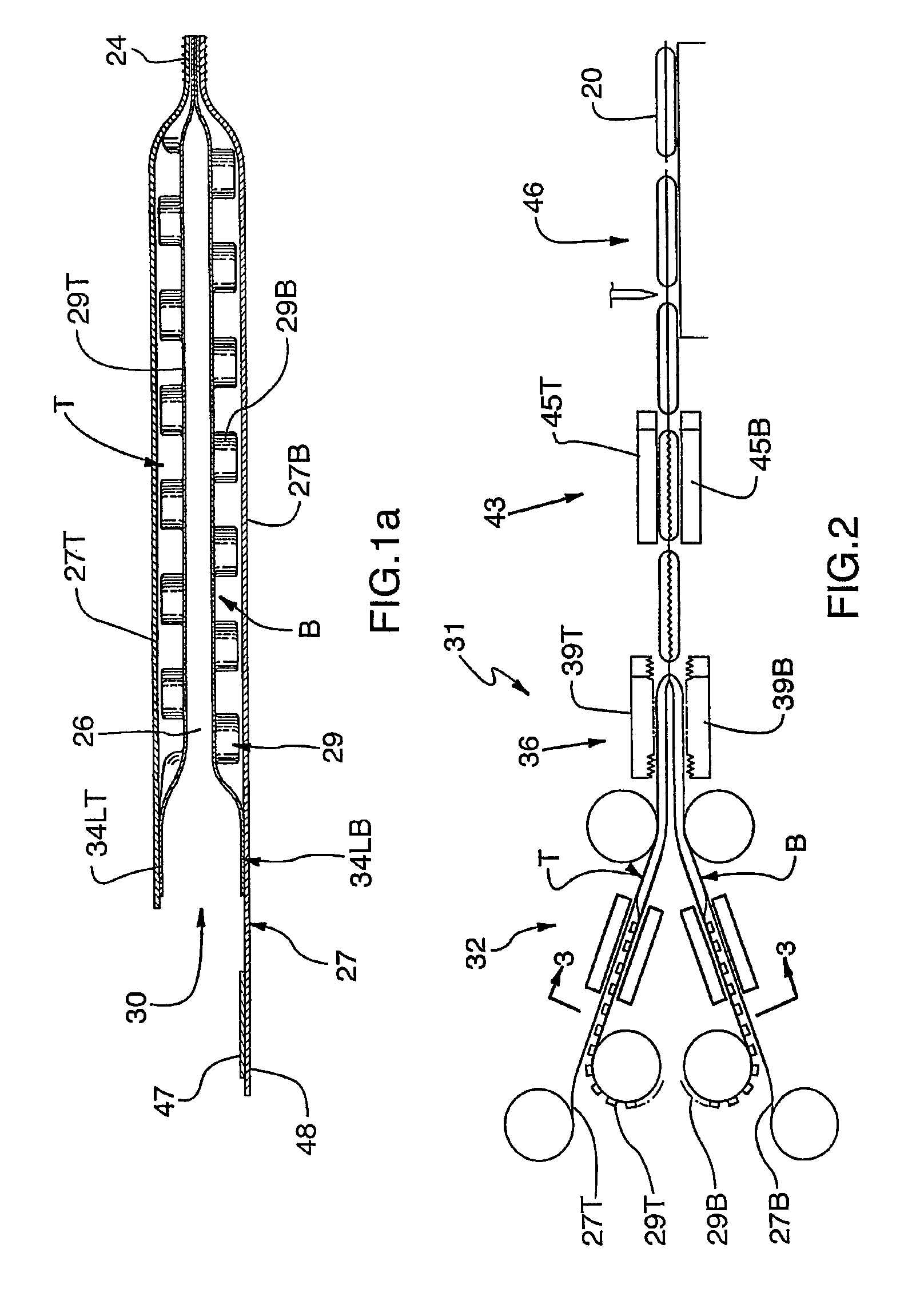Procedure of attaching sheets and padded envelope
a technology which is applied in the field of attaching sheets and padded envelopes, can solve the problems of not being able to recycle, not being able to adhere bubbles to the paper, and not being able to remove bubble material from the paper later for recycling
- Summary
- Abstract
- Description
- Claims
- Application Information
AI Technical Summary
Problems solved by technology
Method used
Image
Examples
Embodiment Construction
[0017]By way of further explanation of the invention, exemplary embodiments of the invention will now be described with reference to the accompanying drawings, in which:
[0018]FIG. 1 is a pictorial view of a padded envelope that embodies the invention.
[0019]FIG. 1a is a sectioned side-elevation of the envelope of FIG. 1.
[0020]FIG. 2 is a diagram of production apparatus used for manufacturing the envelope of FIG. 1.
[0021]FIG. 3 is a cross-sectioned end-elevation in the direction of arrows 3—3 of FIG. 2.
[0022]FIG. 4 is a plan view of a stack of layers as it passes through the apparatus of FIG. 2.
[0023]FIG. 5 is an elevation showing a stack of layers and showing a pair of points-dies of the apparatus of FIG. 2, prior to the points-dies being brought together onto the stack.
[0024]FIG. 6a is a pictorial view of one of the points-dies of the apparatus of FIG. 2.
[0025]FIG. 6b is a pictorial view like that of FIG. 6a, but showing a diagonal arrangement of points.
[0026]FIG. 7 is a close-up sh...
PUM
| Property | Measurement | Unit |
|---|---|---|
| Angle | aaaaa | aaaaa |
| Angle | aaaaa | aaaaa |
| Length | aaaaa | aaaaa |
Abstract
Description
Claims
Application Information
 Login to View More
Login to View More - R&D
- Intellectual Property
- Life Sciences
- Materials
- Tech Scout
- Unparalleled Data Quality
- Higher Quality Content
- 60% Fewer Hallucinations
Browse by: Latest US Patents, China's latest patents, Technical Efficacy Thesaurus, Application Domain, Technology Topic, Popular Technical Reports.
© 2025 PatSnap. All rights reserved.Legal|Privacy policy|Modern Slavery Act Transparency Statement|Sitemap|About US| Contact US: help@patsnap.com



